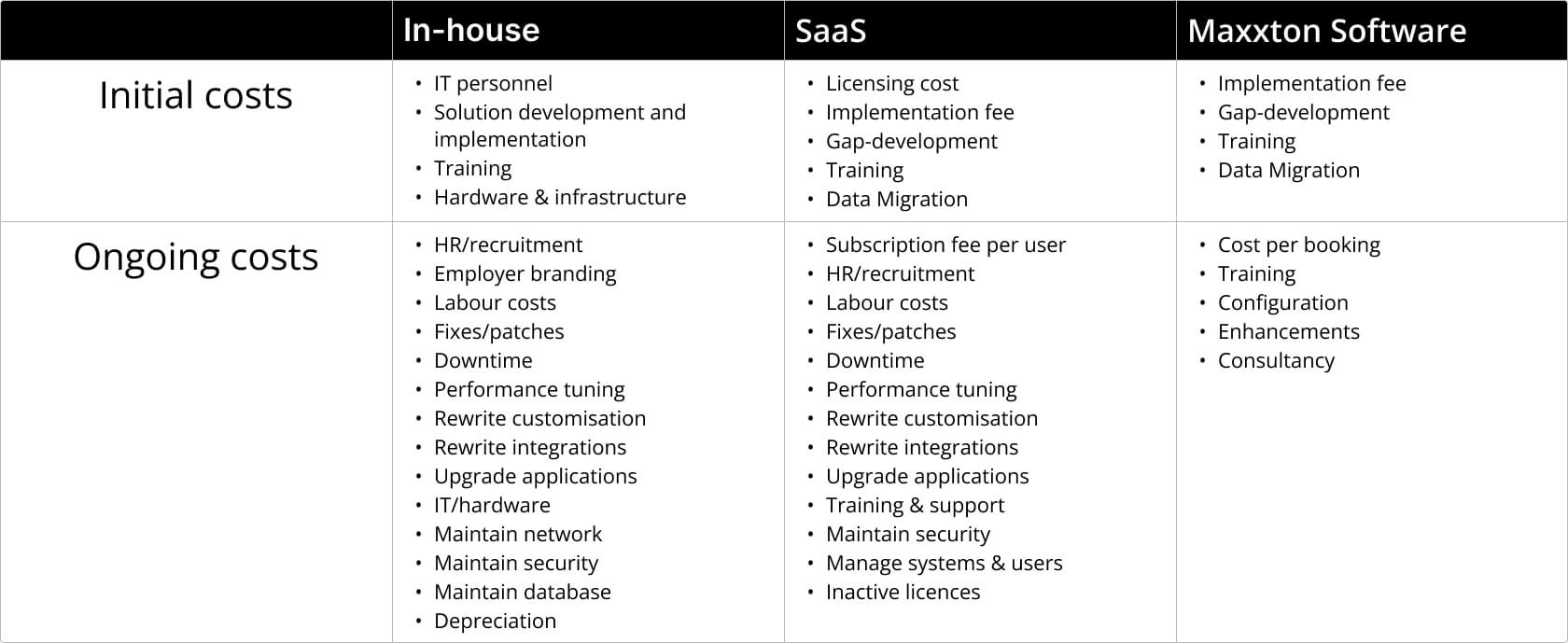Tip of the iceberg
This article discusses the costs of your IT landscape. However, one of the most important things to consider is that your business will have to work with the software, rather than the software being configured to suit the way your business works/operates. That is why we always strive to outperform and keep our software the best in class. With Maxxton Software we offer specific advantages:
- Connectivity Many (API) connections have been established. A connections team is available to assist you with customised connections. In this way, you can work on your best-of-breed IT infrastructure.
- Compatibility Maxxton strives to run all relevant features and modules in the industry. The 100+ developers create compatible software and can help with building connections and integrations.
- Future-proofing In partnership with the most important stakeholders in the industry and via 10+ scrum teams new software will be developed.
- Continuous improvements Scrum teams monitor the performance of the software and run patch fixes, upgrades, (security) audits, and prevent downtime.
- Access to labour & required skill sets After more than 22 years in the business, Maxxton established important relationships with relevant universities (of applied sciences). Maxxton employees are invited for guest lectures. A dedicated recruitment team is always on the hunt for new talent.
- Best fit to business Don’t reinvent the wheel. Maxxton builds intuitive and easy-to-use software. Maxxton software will help you to run your business with operational excellence and enable growth.
- Scalability Maxxton has a proven track record of fast and reliable connections to your new locations and accommodations.
- Expertise At Maxxton with 22 years of experience you will find 100+ software developers. In addition, experienced business consultants and a dedicated customer success team will help you to keep setting the standard in the industry.
- AI Automation, smart decision making, and enhanced customer experience while reducing errors and increasing accuracy and precision.



